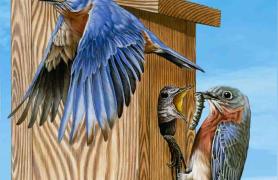While their flashy, day-flying cousins, the butterflies, seem to get all the glory, Missouri’s moths are just as amazing.
There are more moths in the Show-Me State than butterflies. Biologists believe at least 3,000 kinds flutter around our forests, prairies, and backyards from spring through fall — and not just at night. A variety of hawk and sphinx moths can be found visiting flowers during the day.
Moths play a huge role in nature. Some pollinate flowers, which helps plants make seeds. The over-sized appetites of moth caterpillars keeps other plants in check. Birds rely on caterpillars as an easy meal, and bats snarf down moths by the mouthful.
Although many moths are small and drab to blend in with their surroundings, others are large and colorful. For this mini field guide, we chose 10 of Missouri’s biggest and boldest furry flutterers.
Masters of Metamorphosis
Baby moths don’t look anything like their parents! That’s because moths (and their close relatives, butterflies) undergo metamorphosis (met-uh-more-foe-sis).
Life Cycle of a Polyphemus Moth
- Eggs
A moth starts life as a tiny egg. After a few days, an itty-bitty caterpillar hatches out.
- Caterpillar
A caterpillar has but one thought in its squishy little brain: food. Some caterpillars eat only one kind of plant. Others eat many kinds. As the caterpillar eats and eats, it doesn’t stay little for long.
- Pupa
After several weeks, the now chubby caterpillar searches for somewhere safe to turn into a pupa (pyoo-puh). Some, like imperial caterpillars, burrow underground. Most spin a silky cocoon around themselves for protection. Polyphemus caterpillars wrap leaves around their cocoons for camouflage. Some caterpillars spend winter in their cocoons. Others change into moths in a few days or weeks.
- Adult
While a caterpillar is focused on eating, an adult moth is focused on finding a mate. A female releases pheromones (fair-oh-moans), “perfumes” that male moths find irresistible. Males use their feathery antennae to follow the pheromones to the female. After mating, she looks for plants her babies will like to eat (called host plants). She lays dozens — or even hundreds — of eggs on the host plants, and the cycle starts again.
Chonkerpillars
Some caterpillars grow freakishly large.
Hickory horned devils (aka regal moth caterpillars) are Missouri’s largest larvae. They can reach over 5½ inches long — about as big as a hot dog. They’re covered in scary-looking spikes, but they’re completely harmless.
Cecropia moth caterpillars aren’t just one of Missouri’s largest caterpillars, they’re also among the most colorful. They can grow longer than most grown-ups’ fingers and are covered in a rainbow of harmless spikes.
Tomato hornworms (aka five-spotted hawk moth caterpillars) may look big and colorful, but they blend in perfectly with the tomato leaves they love to eat.
If you see this caterpillar, don’t touch it! The Io moth caterpillar’s prickly spines can deliver a painful sting.
Tips for Finding Moths
Stay Up Late
Some moths, like clearwings, fly during the day. But many come out at night. Getting a glimpse of one might involve asking a grown-up if you can stay up late.
Explore Porch Lights
Biologists believe moths use the moon to find their way in the dark. Bright lights, like those from porch lights, throw off this “moon compass,” making the moth zero in on the light instead. Check outdoor lights at different times of the night to see what colorful characters have been lured in.
Hang Up a Light Sheet
It’s easy to build a moth magnet. Just hang a white sheet between two trees and put a bright light, like a lantern, behind it. In no time, a blizzard of moths will collect on the sheet, giving you great looks at a variety of night fliers.
Make Moth Mash
Take an overripe banana — the browner, the better — put it in a bowl, and squish it into goo. Stir in a cup of apple juice and half a cup of honey. Let the mixture “ripen” for a few days then use a paintbrush to slop it onto tree trunks in your yard. After sundown, head out with a flashlight to see what flies in for a sip.
Cecropia Moth
Habitat: Where forests and open areas meet
Flight Season: April–July
Active Time: 3 a.m.–sunrise
Wing Span: 4–6 inches
Caterpillar Foods: Maples, willows, and plums
The cecropia is Missouri’s largest moth. Some can be as large as a tea saucer.
Polyphemus Moth
Habitat: Forests, backyards, and wetlands
Flight Season: April–September
Active Time: 11 p.m.–1 a.m. and 3 a.m.–sunrise
Wing Span: 4–5½ inches
Caterpillar Foods: Maples, birch, and oaks
Named after a giant from Greek mythology who had a huge eye in the center of his head, polyphemus moths use their large eyespots to startle would-be predators.
Luna Moth
Habitat: Forests and wooded backyards
Flight Season: April–September
Active Time: 11 p.m.–1 a.m.
Wing Span: 3–4 inches
Caterpillar Foods: Walnut, pecan, hickories, persimmon, and sweet gum
All four of a luna moth’s pale green wings have eyespots. This might convince would-be predators that the luna is a group of animals instead of a single tasty insect.
Io Moth
Habitat: Forests and wooded backyards
Flight Season: May–October
Active Time: Sunset–midnight
Wing Span: 2–3 inches
Caterpillar Foods: A variety of grasses, flowers, shrubs, and trees
Male and female io moths aren’t the same color. Males are yellow, and females are reddish-brown.
Regal Moth
Habitat: Forests and wooded backyards
Flight Season: May–September
Active Time: 9 p.m.–midnight
Wing Span: 4–6 inches
Caterpillar Foods: Hickories, pecan, and walnut
Like most giant silk moths, male regal moths are smaller than females but have larger, more feathery antennae.
Imperial Moth
Habitat: Forests
Flight Season: May–September
Active Time: 11 p.m.–1 a.m.
Wing Span: 4–5½ inches
Caterpillar Foods: Maples, sycamore, and sassafras
Imperial moths hide on the forest floor during the day. Their wing patterns blend in with yellowish-brown leaves.
Five-Spotted Hawk Moth
Habitat: Vegetable gardens
Flight Season: May–October
Active Time: Sunset
Wing Span: 4–5 inches
Caterpillar Foods: Tomato, pepper, and potato plants
Beware! This moth’s caterpillars, called tomato hornworms, can quickly eat all the leaves from the vegetables growing in your summer garden.
Pandorus Sphinx
Habitat: Flower gardens, edges of fields and streams
Flight Season: May–October
Active Time: Sunset
Wing Span: 3–4 inches
Caterpillar Foods: Wild grapes and Virginia creeper
The dark brown larvae are hard to see during the day but easy to find at night. When you shine an ultraviolet flashlight (often called a black light) at them, they glow in the dark.
White-Lined Sphinx
Habitat: Flower gardens, backyards, prairies
Flight Season: April–November
Active Time: Nearly any time, day and night
Wing Span: 2–3 inches
Caterpillar Foods: Large variety of plants
Like most hawk and sphinx moths, white-lined sphinxes have tongues that are longer than their bodies. They use them to sip nectar while hovering near flowers.
Snowberry Clearwing
Habitat: Flower gardens, backyards, weedy fields
Flight Season: March–October
Active Time: Sunrise–sunset
Wing Span: 1–2 inches
Caterpillar Foods: Coral berry, gentian, blue star
The buzz of its clear wings and the black and yellow bands on its abdomen make this moth easy to mistake for a bumblebee.
Moth vs. Butterfly
Differences between moths and butterflies are only scale deep. In fact, they have a lot in common because they’re both members of a large group of insects called Lepidoptera, which means scaled wing. To tell them apart, look for these clues.
Luna Moth
- Body is chunky and furry
- Antennae are feathery or taper to a point
- Holds its wings flat while at rest
- Usually works the night shift
Monarch Butterfly
- Body is slender and not as furry
- Antennae are skinny with little bumps at the tips
- Holds its wings vertically while at rest
- Usually works the day shift
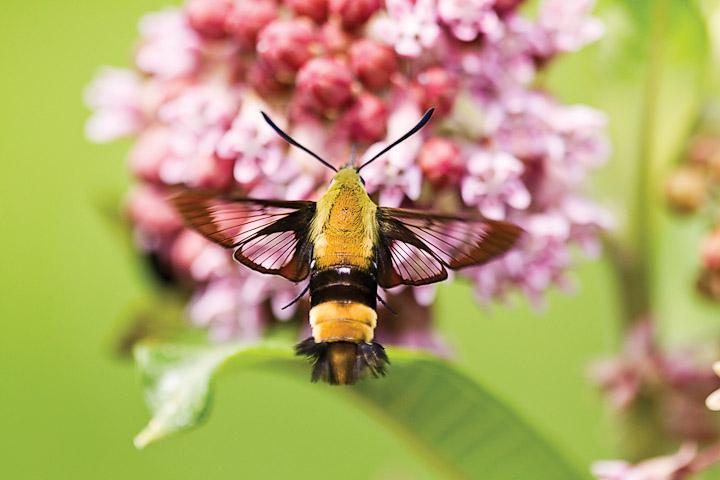
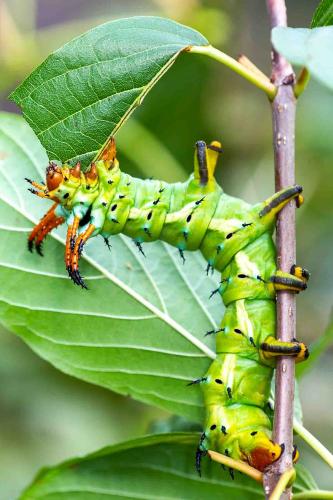
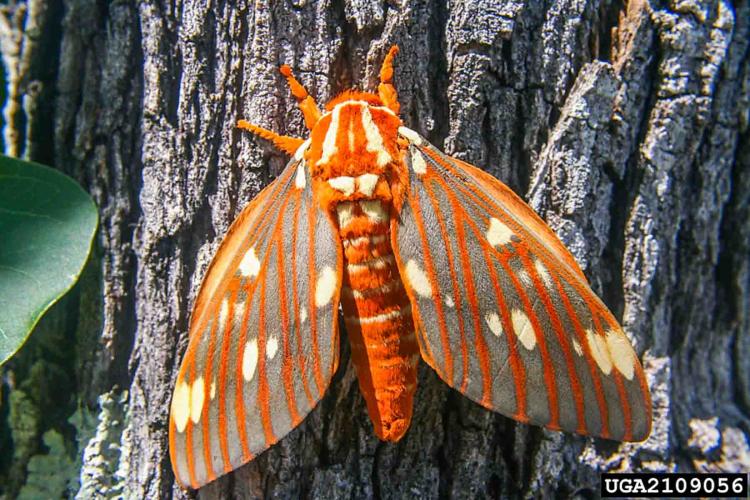
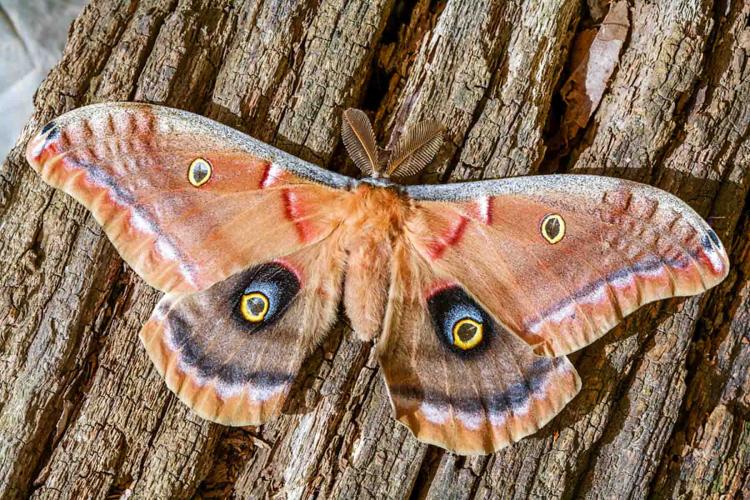
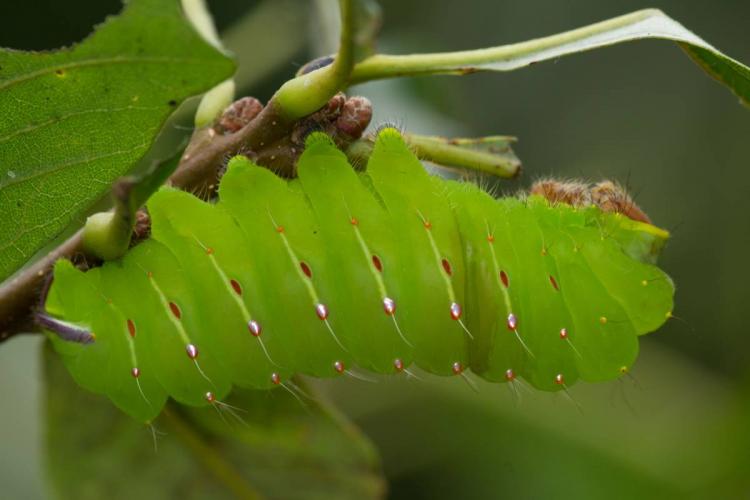
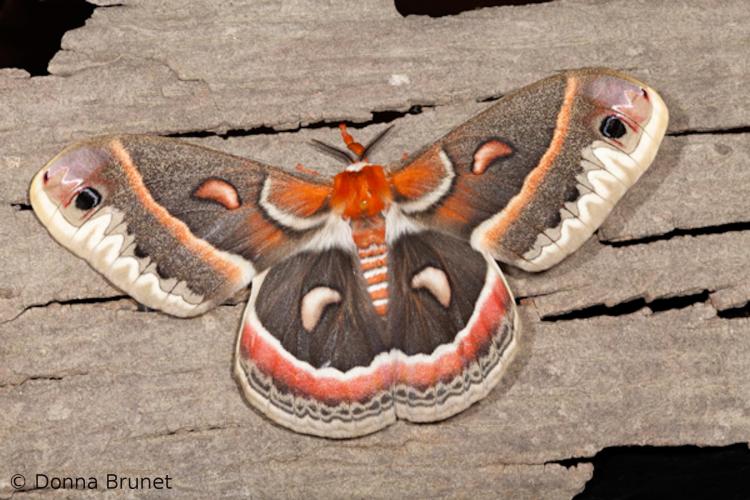
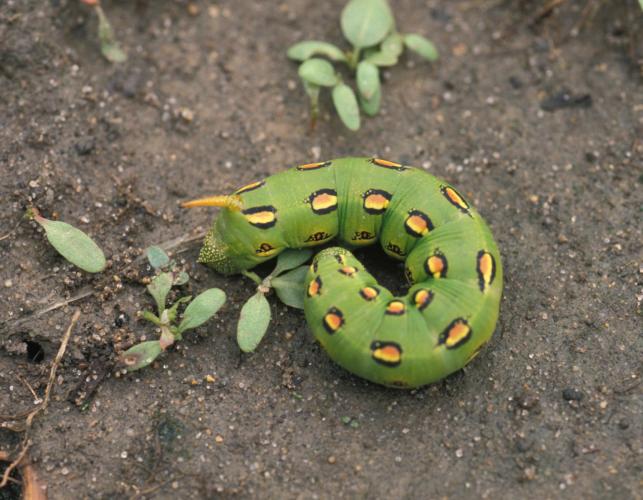
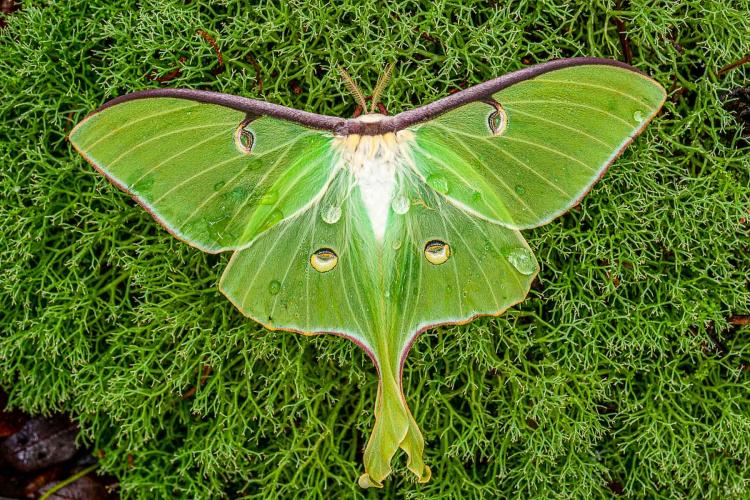
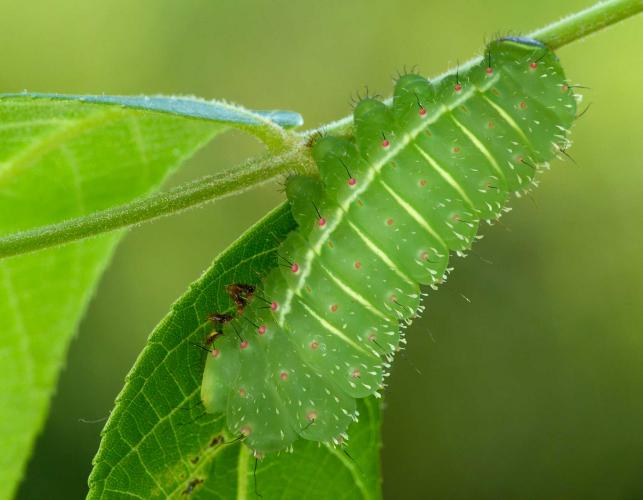
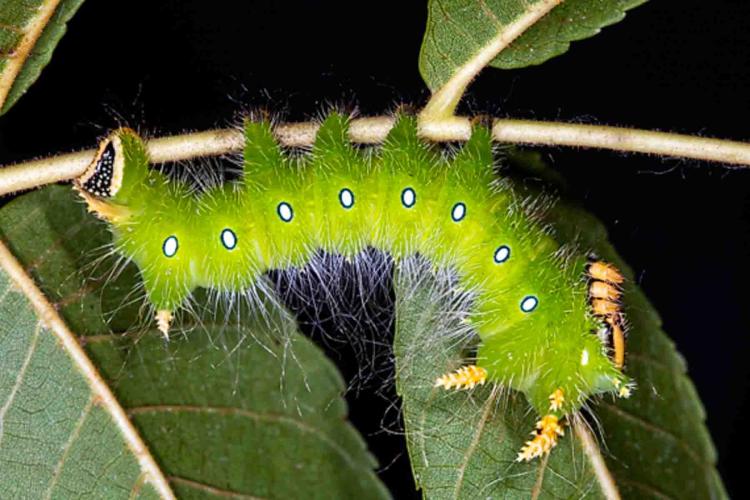
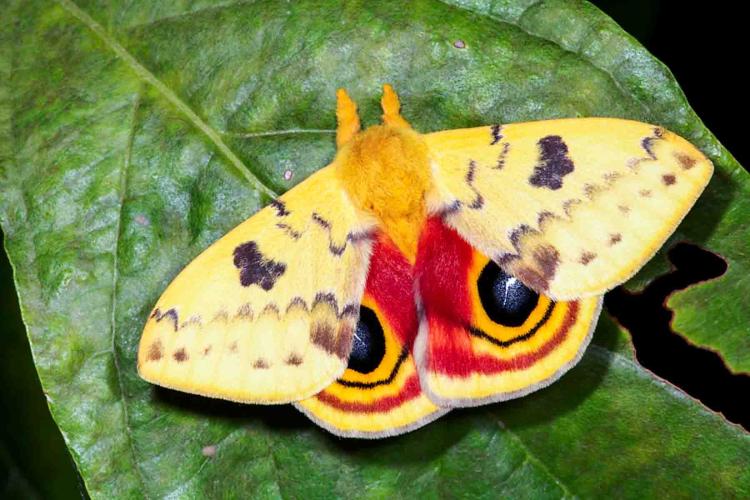
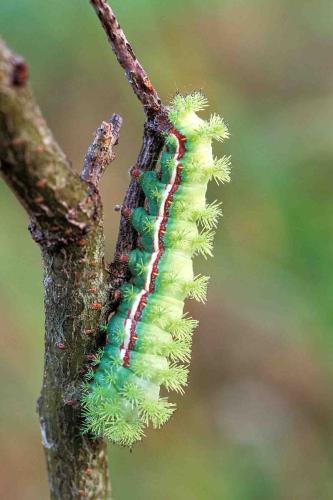
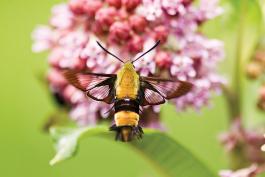
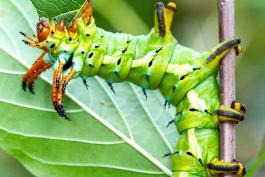
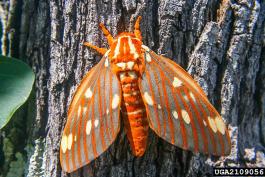
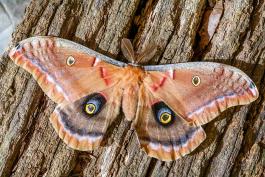
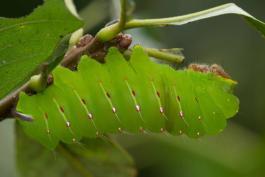
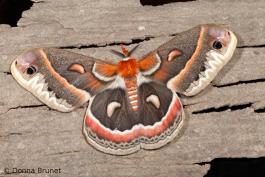
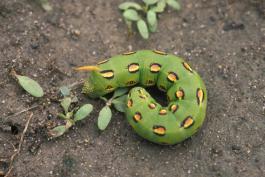
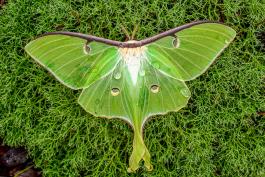
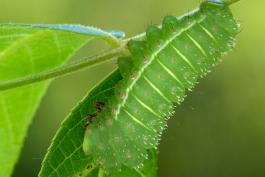
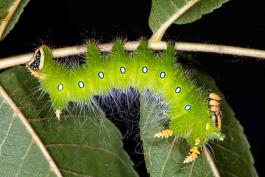
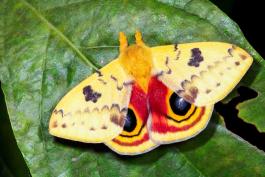
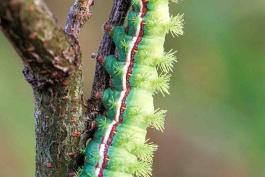
Also In This Issue
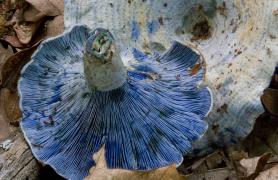
Nature comes in all sizes, shapes, and colors. To celebrate Independence Day, we picked a few of Missouri’s most patriotic plants and animals. Can you figure out what they are using the clues?
And More...
This Issue's Staff
Photographer – David Stonner
Designer – Marci Porter
Designer – Les Fortenberry
Art Director – Cliff White
Editor – Matt Seek
Magazine Manager – Stephanie Thurber























